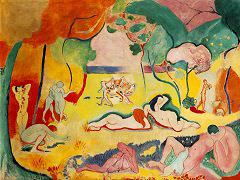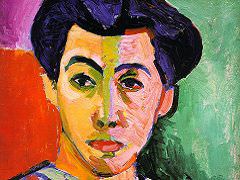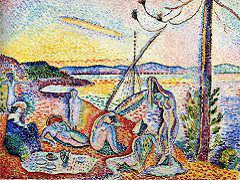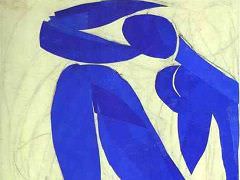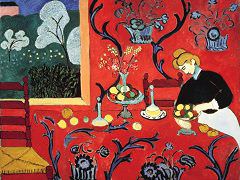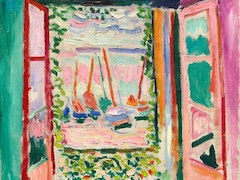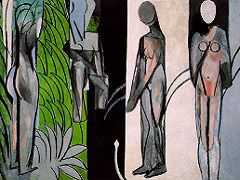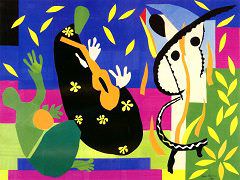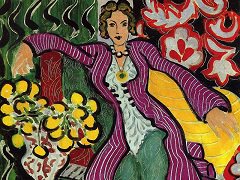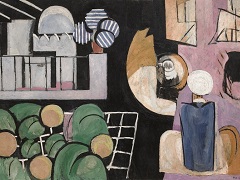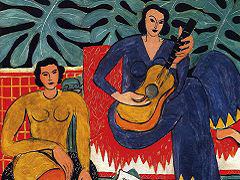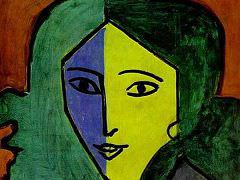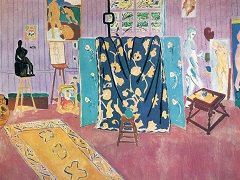Zorah on the Terrace, 1912 by Henri Matisse

It was as if Matisse had at last accepted Baudelaire's Invitation au voyage when he undertook his two working trips to Tangier during 1911-13. Nor can these trips to a Muslim environment be dissociated from his profound appreciation of Persian art. It was as if he were seeking to reinforce artistic experiences through a real confrontation with a nature and a people foreign to normal European experience. At the same time, thanks to the internal development of his own art culminating in Still Life with Aubergines, he was exactly at the point of being maximally prepared for the experience, so that it reinforced rather than diverted the creative path on which he had embarked during the previous decade. One thinks immediately of Delacroix's parallel experience in 1832 and the longstanding repercussions of that trip on his art.
With this crouching study of the Tangier model, Zorah, whom the artist had rendered standing as the center panel of a triptych the previous winter, Matisse once again creates the centerpiece of a new tripartite composition. The present study of Zorah thrusts us into a world tantalizingly parallel to that of Delacroix's Women of Algiers, but with significant differences. Whereas Delacroix conjures up the closed, shadowy world of the harem interior, with opulent surroundings, Matisse places his model outside, on a rooftop under blazing sunlight, with a minimum of accessories. But the intensity of the light is muted by a pale green shadow that supports this color in Zorah's dress, much as the blue of the carpet functions for the lower part of her dress. The pink patch of sunlight in the upper left is balanced by a matching hue in the goldfish bowl in the lower right. Thus the principle of cross-correspondence of color found in his Fauvist work - notably Green Stripe - recurs in a post-Fauve effort. As for the goldfish bowl, an element curiously out of context here, it is simply a reference to a motif that the artist was currently exploring in many different versions in his studio. In effect, given its placement, we might think of the Goldfish as Matisse's monogrammed signature to this picture.

